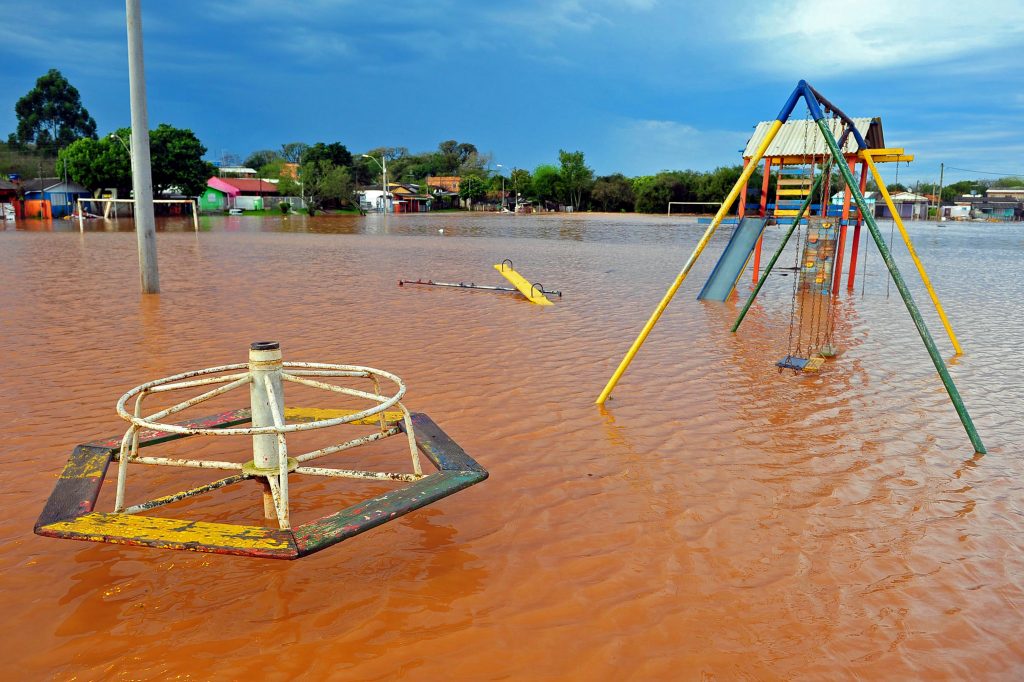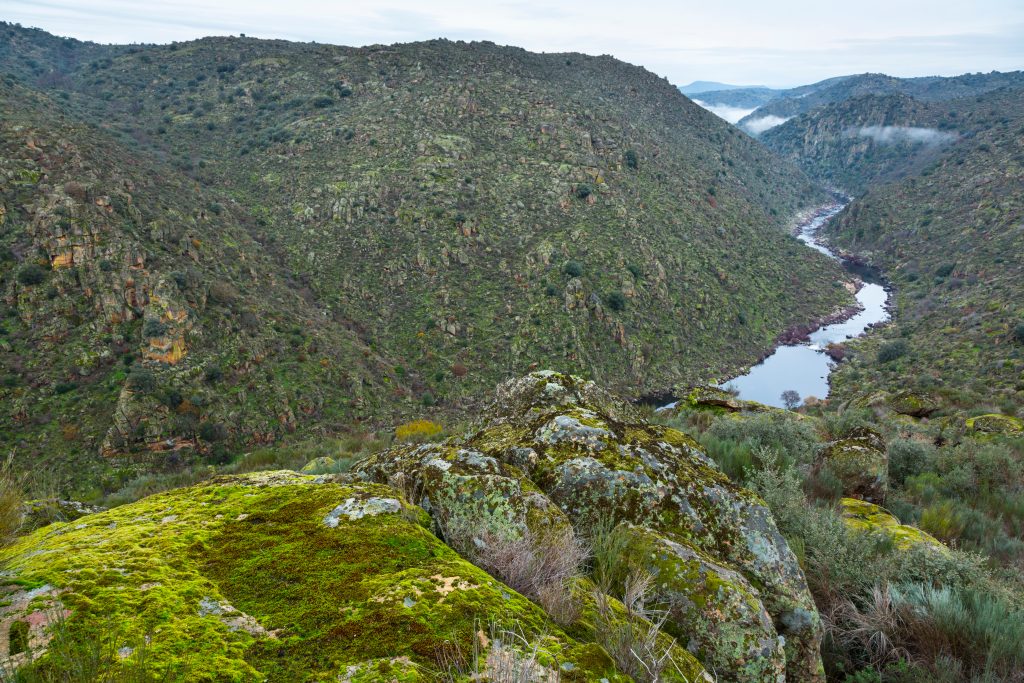News
Countries urgently need land plans to respond to the triple planetary crisis

Comment | Jun 2024
Dr Raquel Agra, UNEP-WCMC’s Deputy Head of Nature-Based Solutions, looks at the challenges of land restoration, desertification and drought resilience. She argues these present an opportunity to find common ground in tackling biodiversity loss, climate change and poverty, and that different Nature-Based Solutions have a role to play.
Last month I returned from a trip to Brazil. I travelled through the north-east and central-west regions, where one topic was on everyone's lips and blanketing news coverage: the extreme flooding of the Guaiba River basin, in the south of Brazil. The loss of life and severe damage to property and infrastructure in Porto Alegre, the largest city in the state of Rio Grande do Sul, are devastating. As of 3 June, 172 people have died, around 600,000 are homeless and more than 2.3 million have been affected.
The rains follow a four-year drought in Brazil, the most severe in living memory. In November, Araçuaí, a city in Minas Gerais state, sweltered in the highest temperature ever recorded in Brazil at 44.8°C. The drought has also turned the Amazon into a tinderbox, with recent fires surpassing the extreme 2019 season and constituting the most fire outbreaks in the Amazon for 15 years.
I lived in the capital, Brasília, between 2013 and 2020, and remember regular reports of a cycle of extreme weather from the south to the north of the country: heatwaves, intense rainfall, floods, droughts, and forest fires. Scientists can, with increasing confidence, confirm that these disasters are interlinked. Last month the World Meteorological Organization published a report suggesting that a combination of the El Niño climate pattern and climate change has caused 12 extreme weather events in just one year in Brazil.
These interconnected disasters remind us how intertwined the three Rio Conventions (the Convention on Biological Diversity, United Nations Framework Convention on Climate Change and United Nations Convention to Combat Desertification) are, both in their challenges and their shared solutions.
The flooding in Rio Grande do Sul has also brought discussions about the unequal distribution of the impacts of climate change to the fore. Studies have already shown that the most affected areas are those with the highest concentrations of people in poverty. Awareness of this inequality must inform conversations about and the solutions to problems, at every level.

Land restoration is in the spotlight this year
In 2025, Brazil will host the UNFCCC COP30 in the heart of the Amazon. This reflects the critical role the country can play in keeping the planet within the 1.5°C target. Tackling biodiversity loss and halting land and ecosystem degradation will be crucial. But we can’t wait for 2025. 2024 already represents a concrete opportunity to raise ambition in the way we manage our land and take action to tackle the interconnected crises.
Healthy land is at the heart of achieving climate, nature and sustainable development commitments. Land restoration and drought resilience represent common ground to tackle biodiversity loss, climate change impacts and poverty.
The importance of this year's agenda is clear. At the sixth session of the United Nations Environment Assembly (UNEA-6), a resolution was adopted to strengthen international efforts on combatting desertification, restoring degraded land, promoting conservation and enhancing drought resilience. The theme of World Environment Day 2024 focused on rebuilding our ecosystems to counter desertification and land degradation. The UNCCD COP16 in Saudi Arabia this December will be vital for coordinated action on land and drought resilience. Finally, this year's World Day to Combat Desertification and Drought Day (17th June) emphasises the future of land stewardship, backing caring for land as an intergenerational responsibility.
As the UN Secretary-General António Guterres stated last year, “We depend on land for our survival. Yet, we treat it like dirt.”
We must change our collective behaviour. The key messages for today highlight the importance of hitting restoration goals, slowing climate change, protecting nature and providing food security for billions around the world. Global commitments have been set. Under the UNCCD, over 130 countries have pledged to achieve land degradation neutrality by 2030, which means each nation reaching a neutral, or even positive, impact on land. Restoring land also features prominently in the targets of the Global Biodiversity Framework (or Biodiversity Plan) and the UNFCCC’s agenda.
UNEP-WCMC works actively to support the UNCCD Global Mechanism. We are currently assessing the financing needed globally to implement the Desertification, Land Degradation and Drought targets by 2030. Our experts helped to develop a methodology to assess these financial needs and tested it in five countries: Morocco, Panama, Sri Lanka, Turkey and Moldova. Quantifying these costs drove home to us the scale of the problem of land degradation, as a concrete issue where climate change and biodiversity loss interact. The work is all the more vital given most countries need to address the problem of drought, desertification and land degradation and they lack information to shape their priorities.
This financial needs assessment will be presented in December at the UNCCD COP16. It will be a critical planning tool in identifying gaps between current and desired outcomes. The assessment will inform deliberations on critical issues related to resource mobilisation and implementation of the Convention.
UNEP-WCMC is also a partner agency of the UN Decade on Ecosystem Restoration (2021-2030), which aims to halt the degradation of ecosystems, and restore them to achieve global goals - for the benefit of people and nature. Through our expertise, partnerships, ongoing projects and collaborations, we provide the evidence needed to make the case for nature recovery and to inform the prioritisation, planning, effective implementation, scaling up and monitoring of restoration action worldwide.
Nature-based Solutions to tackle drought and desertification
Innovative Nature-based Solutions (NbS) are on the frontline in tackling land degradation. NbS initiatives around the world are having a significant impact in fighting ecosystem degradation, restoring land health and improving human well-being.
In my home country of Portugal, rewilding strategies have achieved remarkable land restoration in the Greater Côa Valley, in the north of the country. The landscape was degraded and vulnerable to forest fires, posing a huge threat to local communities and wildlife. Reducing the human footprint to allow natural ecological processes to re-establish themselves has meant the valley is now a revitalised natural landscape that native roe deer have returned to. It delivers important ecosystem services such as fire prevention, food and other produce. There are also enterprise opportunities such as wildlife tourism.

This project in the Greater Côa Valley was supported by the Endangered Landscapes and Seascapes Programme, a conservation initiative to restore and protect important natural habitats across Europe and beyond. UNEP-WCMC played a role by developing a guide to help restoration practitioners use two tools that quantify the climate change mitigation potential of ELSP landscape restoration projects.
UNEP-WCMC is involved in multiple strands of work to similarly support governments, international initiatives and companies. As part of the EU Horizon 2020 Rexus Project, UNEP-WCMC is working with partners to strengthen business cases for NbS as a way to deliver water, food and energy security in five drought-prone regions of Europe.
All our work at UNEP-WCMC is guided by our awareness that tackling land degradation represents a common ground for solving biodiversity loss, climate change, pollution and poverty. We can do this by deploying equitable, science-led Nature-based Solutions. Projects like the Greater Côa Valley in Portugal demonstrate that tackling land degradation through NbS can deliver numerous wide-ranging benefits for people and nature. Now, we need such efforts to be scaled up at the international level to increase countries’ resilience to disasters and prevent such damage as that on the scale of recently seen in southern Brazil. To achieve this, the world must pursue a coherent approach to implementing the Paris Agreement on Climate Change, the Global Biodiversity Framework and the UN Convention to Combat Desertification.
Main image: EU/ECHO/Anouk Delafortrie via Flickr
Have a query?
Contact us
communications@unep-wcmc.org
